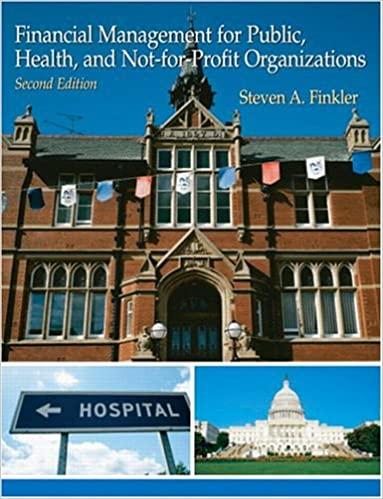Question
Mary Smith, a Level II CFA candidate, was recently hired for an analyst position at the Bank of Ireland. Her first assignment is to examine
| Mary Smith, a Level II CFA candidate, was recently hired for an analyst position at the Bank of Ireland. Her first assignment is to examine the competitive strategies employed by various French wineries. |
| Smiths report identifies four wineries that are the major players in the French wine industry. Key characteristics of each are cited in the table below. In the body of Smiths report, she includes a discussion of the competitive structure of the French wine industry. She notes that over the past five years, the French wine industry has not responded to changing consumer tastes. Profit margins have declined steadily, and the number of firms representing the industry has decreased from 10 to 4. It appears that participants in the French wine industry must consolidate in order to survive. |
| South Winery | North Winery | East Winery | West Winery | |
| Founding date | 1750 | 1903 | 1812 | 1947 |
| Generic competitive strategy | ? | Cost leadership | Cost leadership | Cost leadership |
| Major customer market (more than 80% concentration) | France | France | England | U.S. |
| Production site | France | France | France | France |
| Characteristics of Four Major French Wineries |
| Smiths report notes that French consumers have strong bargaining power over the industry. She supports this conclusion with five key points, which she labels Bargaining Power of Buyers: |
| Many consumers are drinking more beer than wine with meals and at social occasions. | |
| Increasing sales over the Internet have allowed consumers to better research the wines, read opinions from other customers, and identify which producers have the best prices. | |
| The French wine industry is consolidating and consists of only 4 wineries today compared to 10 wineries five years ago. | |
| More than 65% of the business for the French wine industry consists of purchases from restaurants. Restaurants typically make purchases in bulk, buying four to five cases of wine at a time. | |
| Land where the soil is fertile enough to grow grapes necessary for the wine production process is scarce in France. |
| After completing the first draft of her report, Smith takes it to her boss, RonVanDriesen, to review. VanDriesen tells her that he is a wine connoisseur himself and often makes purchases from the South Winery. Smith tells VanDriesen, In my report I have classified the South Winery as a stuck-in-the-middle firm. It tries to be a cost leader by selling its wine at a price that is slightly below the other firms, but it also tries to differentiate itself from its competitors by producing wine in bottles with curved necks, which increases its cost structure. The end result is that the South Winerys profit margin gets squeezed from both sides. VanDriesen replies, I have met members of the management team from the South Winery at a couple of the wine conventions I have attended. I believe that the South Winery could succeed at following both a cost leadership and a differentiation strategy if its operations were separated into distinct operating units, with each unit pursuing a different competitive strategy. Smith makes a note to do more research on generic competitive strategies to verify VanDriesens assertions before publishing the final draft of her report. |
| Smith knows that a firms generic strategy should be the centerpiece of a firms strategic plan. On the basis of a compilation of research and documents, Smith makes four observations about the North Winery and its strategic planning process. Which of these observation(s) least support the conclusion that the North Winerys strategic planning process is guided and informed by its generic competitive strategy?(Select all that apply.) |
i. North Winery is a list of unrelated action items that does not lead to a sustainable competitive advantage.ii. North Winery's price and cost forecasts account for future changes in the structure of the French wine industry.iii. North Winery places each of its business units into one of three categories: build, hold, or harvest.iv. North Winery uses market share as the key measure of its competitive position.
Step by Step Solution
There are 3 Steps involved in it
Step: 1

Get Instant Access to Expert-Tailored Solutions
See step-by-step solutions with expert insights and AI powered tools for academic success
Step: 2

Step: 3

Ace Your Homework with AI
Get the answers you need in no time with our AI-driven, step-by-step assistance
Get Started


